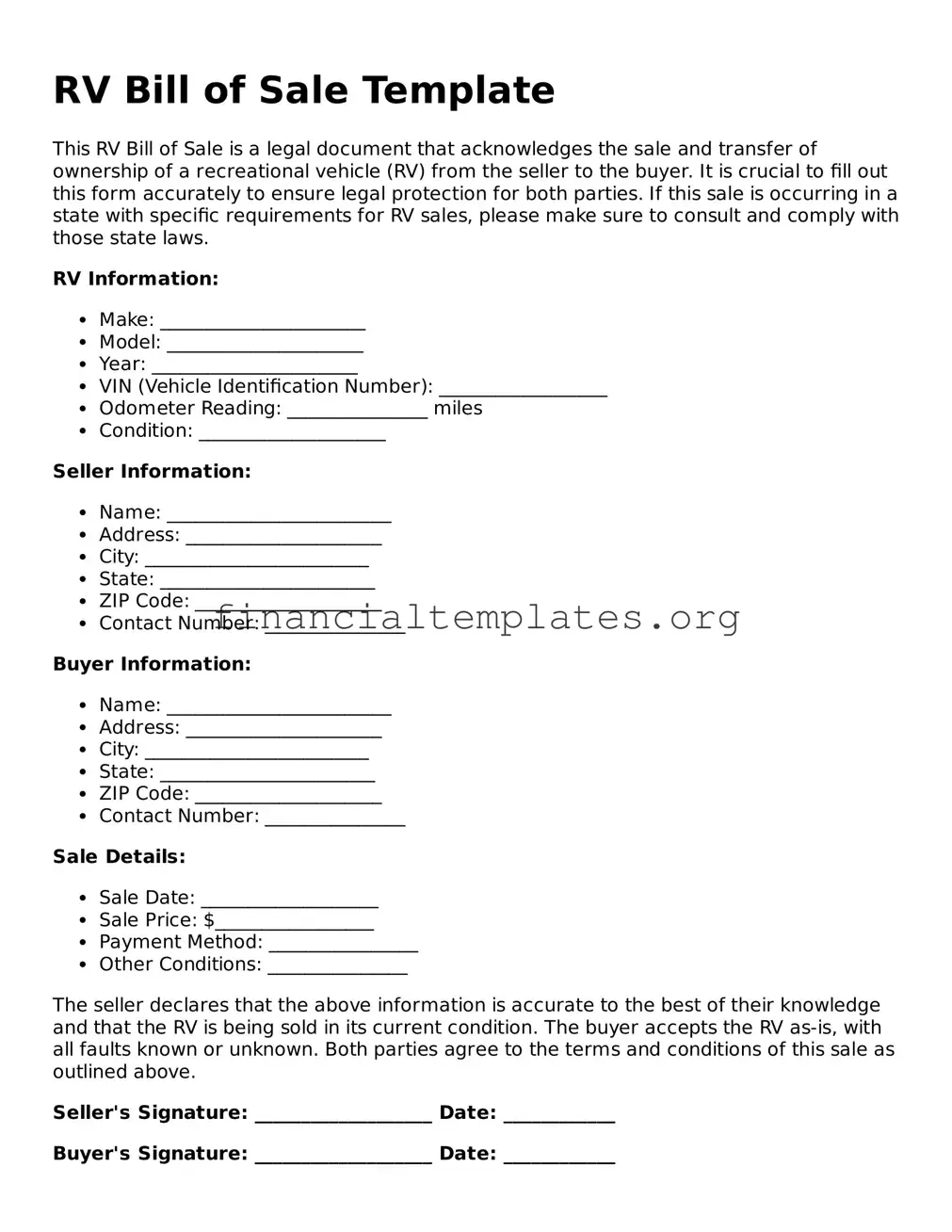The Car Bill of Sale form shares many similarities with the RV Bill of Sale, as both documents serve as critical proof of purchase and transfer of ownership for vehicles. While the latter specifically concerns recreational vehicles, both forms detail the transaction between buyer and seller, listing information such as the vehicle make, model, year, VIN (Vehicle Identification Number), and the agreed-upon price. These documents are indispensable for registration purposes and to ensure legal ownership, acting as a safeguard for both parties against potential disputes regarding the vehicle’s history or ownership status.
Similar to the RV Bill of Sale, the Boat Bill of Sale form is another specialized document used to confirm the sale and transfer of ownership of a boat. It captures vital details like the make, model, year, and Hull Identification Number (HIN) of the boat, parallel to the VIN in vehicular sales. This document is crucial for the buyer to register the boat in their name, ensuring they can legally operate it. Both documents play an essential role in the respective registration processes, providing verifiable evidence of the transaction to state and federal agencies.
The Aircraft Bill of Sale is akin to the RV Bill of Sale, yet it is tailored to transactions involving aircraft. This document contains specific information related to the aircraft being sold, including make, model, serial number, and any identifying numbers akin to the VIN for vehicles. Like its RV and maritime counterparts, this document is essential for the legal transfer of ownership and is necessary for the registration of the aircraft under the new owner's name with the Federal Aviation Administration (FAA), thereby offering protection and legal clarity for both buyer and seller.
The General Bill of Sale form, while more versatile, relates closely to the RV Bill of Sale by acting as a written record of the sale and transfer of ownership of personal property. This form can apply to a wide range of items, from vehicles to smaller personal goods. Despite its broader application, it serves the same primary function: it details the transaction between the buyer and seller, specifying the item, sale price, and date of sale, thereby providing a legal basis for ownership and protection against future claims or disputes.
Lastly, the Real Estate Bill of Sale parallels the RV Bill of Sale by concretizing the sale and transfer of ownership of property, in this instance, real estate. Though dealing with immovable property compared to vehicles or boats, both documents establish the terms of the sale, including the identification of the property (through an address or legal description), agreed-upon price, and both parties' details. Critical for proving ownership and settling disputes, these documents stand as official records of the transaction, ensuring that the transfer is recognized and enforceable by law.
